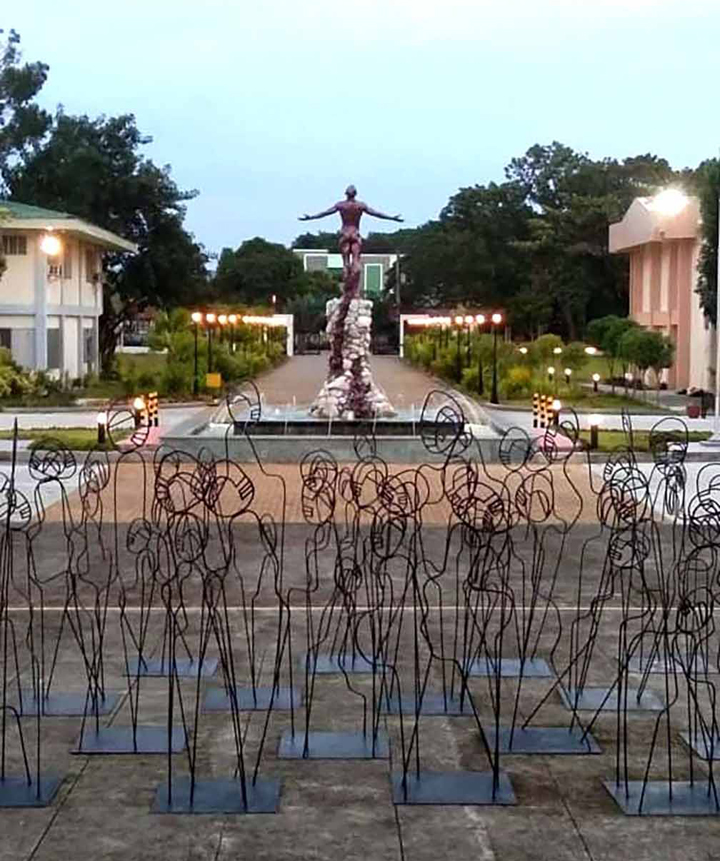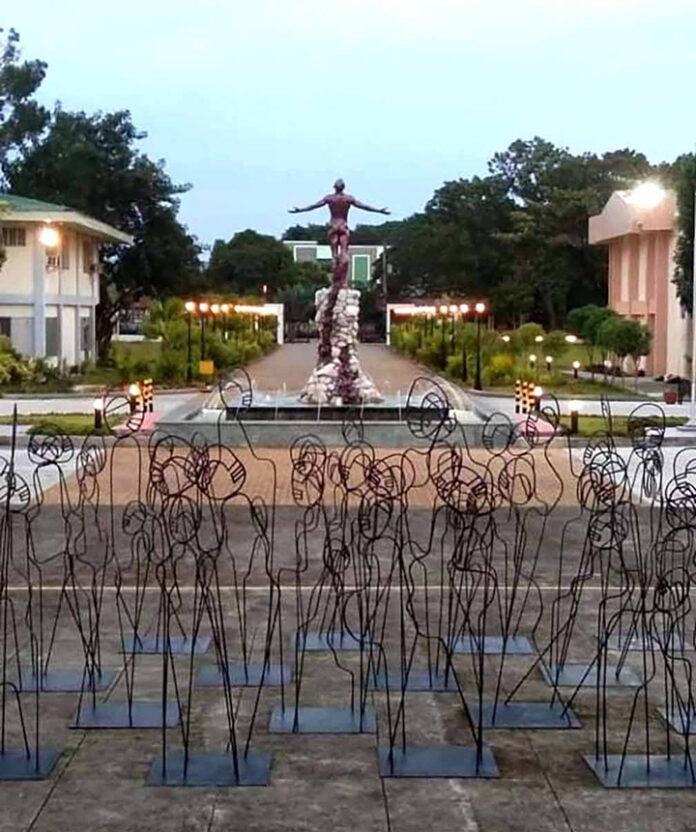
Do they move with the wind?
What happens when it rains?
Do they change colors according to the time of day?
This was my conversation—and more—with Martin Genodepa, artist, when he presented me with photographs of his latest installation on the grounds of University of the Philippines (UP) Iloilo.
Would I be interested to write about them? Upon seeing the pieces, I said yes. I am familiar with the works of Genodepa after he also invited me to review his work many years back, where I served as an external critic of his project.
Permit me to go back to my review then: “It was early December and Genodepa and I were standing in front of the campus of UP Visayas in the town of Miag-ao. Where one expected Christmas trees and other buntings, hammocks appearing like sailboats being blown by the wind dominated the front of the main building. Surreal and satirical on both levels, the construction of the hammocks were guided, according to Genodepa, by the lines taken no less from the Philippine National Anthem.”
And now this installation made in the middle of the long, interminable season of virus, infections and vanishing.
Like thoe “duyan” appropriated for the poetics of patriotism, welded steel appearing malleable and soft forms shapes, and where a space is created, emptiness is also demarcated. Depending on your position of appraisal, the shapes empty into other shapes, the blankness leading to more blankness. But you thank the divinities for where the absence of matters is developed, there is where you can locate the beginning of dimensions felt.
Can you send me photos of the installation in the rain (if possible) and under the sun (naturally)?
Will there be images of these wires at sunset?
Strange that my request for context has become the substitute for admiring a work of art because the cause of most of our material losses is also the reason for the critic not being able to travel to the site of this creation. In another world, another time, I would have been there, moving around the site, sensing the tactility of this art that the artist has labeled Memorial Park: Missing the Crowd.
In the words of the artist, the art installation is “a doodle-like representation of a small mass or gathering, with figures closely huddled or in dynamic interaction.” He continues: “Crowding, with its positive and negative values, has been prohibited in the time of the pandemic and has changed the nature of social interaction of people. That the crowd has become almost a memory is suggested in the tendency of the work to be obscure or visible—depending on the time of the day and the angle from which it is viewed.”
What is art without hope? Martin Genodepa reassures us “the pieces of sculpture fabricated from steel rods invite interaction with the viewer who may insert himself or herself within the installation to relive the memory of being in a crowd.”
Viewed from afar, a given in this age of distancing, the critic (viewer) is offered the experience of detachment, a seeming condemnation or judgment we all humans go through as we memorialize disappearances and physical deaths.
As to my questions, the pieces, the artist tells me, move with the wind. They survive the rain and the sun. They last through twilight. Like memories of losses.
This public art project is made possible by a UPV Creative Work Grant from the Office of the Vice Chancellor for Research and Extension.
Read full article on BusinessMirror

